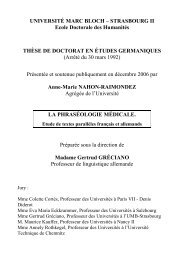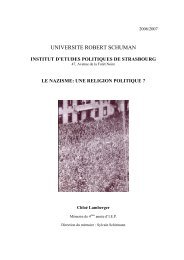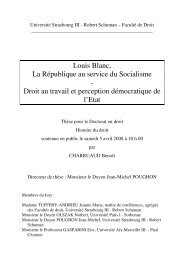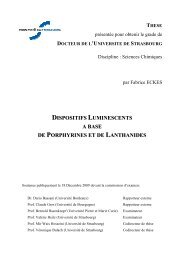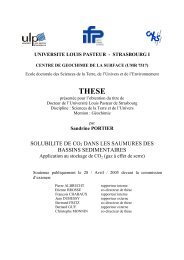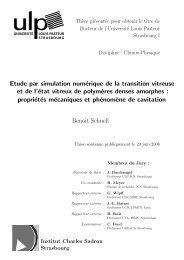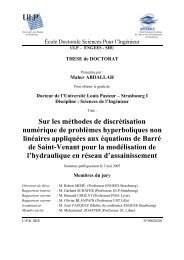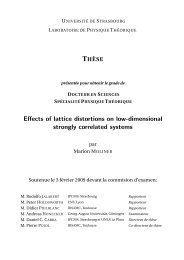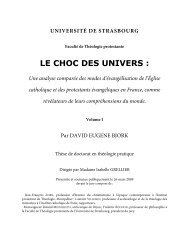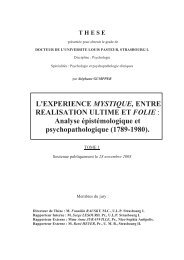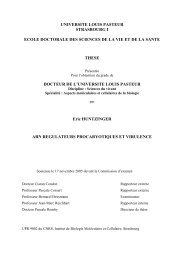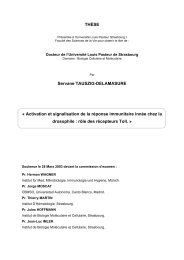Anthony KERMAGORET - THESES ET MEMOIRES DE L'UDS
Anthony KERMAGORET - THESES ET MEMOIRES DE L'UDS
Anthony KERMAGORET - THESES ET MEMOIRES DE L'UDS
You also want an ePaper? Increase the reach of your titles
YUMPU automatically turns print PDFs into web optimized ePapers that Google loves.
[S- ]<br />
3. Evans method 2<br />
Chapitre III<br />
A solution of paramagnetic species in CD2Cl2 (5 mg in 0.3 mL) was placed in a NMR tube<br />
and an inner narrow-bore NMR tube, containing a solution of CH3NO2 (20% Vol.) in CD2Cl2, was<br />
installed. The υCH3 (Hz) is measured by 1 H NMR on a Bruker Avance 300 MHz instrument<br />
operating at 300.13 MHz, respectively, using TMS as external standard. υ°CH3 is measured in the<br />
same way, using pure CD2Cl2 instead of the sample solution. The simplified mathematic formula<br />
(1) is used to calculate the mass susceptibility χp which can was used to calculate the magnetic<br />
moment µ in Bohr Magnetons (BM) with formula (2).<br />
(1) χp = χ0 + (3000.∆υ)/(4Π.υ0.C.M)<br />
[χ0 = χCD2Cl2 = -0.58·10 -6 (cm 3 /l); υ0 = 300013 Hz; ∆υ = υCH3-υ°CH3 C = Concentration of the<br />
paramagnetic compound (mol/l); M = Molar mass of the paramagnetic compound (g/mol)]<br />
(2) µ = 2.84·√(χp·M·T)<br />
[T = Temperature].<br />
4. Magnetic Study<br />
The magnetic properties of 2a were investigated in the 300-1.8 K temperature range with an<br />
applied field of 5 kOe. The Curie constant C = 4.64 emu·K·mol -1 , determined from the fit of the 1/χ<br />
= f(T) curve with the Curie-Weiss law in the high temperature region (150-300 K), is in accordance<br />
[S ]<br />
with what is expected for four octahedral Ni(II) ions (with a g value of 2.15). 3<br />
Upon cooling, the χT product exhibits a regular decrease from 4.54 emu·K·mol -1 at 300 K to 3.47<br />
emu·K·mol -1 at 20 K, indicating the occurrence of at least one intramolecular antiferromagnetic<br />
interaction. Below 20 K, the small increase of the χT product up to 3.49 emu·K·mol -1 at 14 K and<br />
the final decrease below 14 K are most probably due to the complicated interaction scheme and to<br />
the presence of competing intramolecular interactions (Fig. S-5) as well as zero-field splitting and<br />
intermolecular interactions.<br />
Ni(1)<br />
J1<br />
J3<br />
Ni(2)<br />
J2<br />
J2 Ni(3)<br />
J1<br />
Ni(4)<br />
Figure S-5. Spin and interaction topology considered for Ni4.<br />
17



